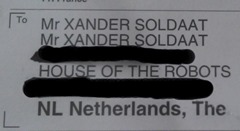 Today, my friends from DHL brought me some new toys! Thanks to Yassine from Generation Robots for sending me these to play with:
Today, my friends from DHL brought me some new toys! Thanks to Yassine from Generation Robots for sending me these to play with:
- A pre-production model of the Wheelphone robot – a robot frame that can be connected to either an iPhone or an Android phone
- A Seeedstudio DSO Quad, a 4 channel digital storage oscilloscope
The Wheelphone
The Wheelphone is a great little platform that allows you to control a robot through your phone. It works with both Android and iPhones. The Android interface is though USB via the accessories API and the iPhone communicates via the audio connector you see in the picture. Here are the specs, taken from the WiKi:
- Dimensions are: 92 mm width, 102 mm length, 68 mm height, 200 g
- Comes with a LiPo rechargeable battery (1600 mAh, 3.7 V), which provides bout 3.5 hours autonomy (motors running at middle speed continuously). Recharging time about 1h45.
- Can be charged up using either the micro USB female connector in front of the robot, 500mA or with 2 golden contacts in front and the docking station, 1000mA
- The processor is a Microchip PIC24FJ64GB004 @ 16MHz (8 MIPS); 16 bit microcontroller plus whatever you have on the phone.
- It has 8 KB RAM and 64KB Flash, but you don’t really use that (unless you end up programming your own firmware) plus, of course, whatever you have on your phone.
It has 2 DC geared motors; speed is controlled (forward direction) with backEMF (nifty) - Its maximum speed is 30 cm/s
- The body is made of a moulded plastic case and a bendable phone holder. My prototype is 3D printed, I think.
- It has 4 infra-red sensors measuring ambient light and proximity of objects up to 6 cm (placed on the front-side of the robot) and 4 ground sensors detecting cliffs or color differences (placed on the bottom-front-side of the robot)
- It has a LED to let you know if it charging or charged.
- Communication on Android is done via USB and via the sound cable on the iPhone. Both achieve a 20Hz sensor refresh frequency.
- There is a USB connector (type A) as an alternative to the micro USB cable. You can just use your own cable in that case.
- Programming is done via the Android SDK or iOS SDK
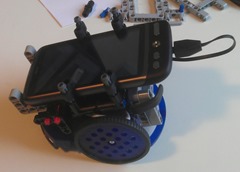 I had a little go with the default programs using my rather old HTC Hero but it worked just fine! I did have to make some modifications to the platform by adding some Technic LEGO to make the phone fit better. Keep in mind that this is just a preproduction unit, so the final one may have a different way for affixing your phone. I am happier with the configuration I made because the centre of gravity is lower. However, the phone’s camera is totally obscured, so you can’t use the more advanced features like ball tracking. Oh well, it’s not like my HTC Hero would be able to handle that, I think. I may give that a go with my HTC Sensation in the next few days.
I had a little go with the default programs using my rather old HTC Hero but it worked just fine! I did have to make some modifications to the platform by adding some Technic LEGO to make the phone fit better. Keep in mind that this is just a preproduction unit, so the final one may have a different way for affixing your phone. I am happier with the configuration I made because the centre of gravity is lower. However, the phone’s camera is totally obscured, so you can’t use the more advanced features like ball tracking. Oh well, it’s not like my HTC Hero would be able to handle that, I think. I may give that a go with my HTC Sensation in the next few days.
Anyway, I shot a quick video of the Wheelphone on a line following mat:
There are a few demo programs which you can download and run straight away. Some of them are a little more intelligent than others, but they all come with source code, so you can tweak away. You can program using the standard Android development environment, which in most cases will be Eclipse. I guess I have some setting up and configuring to do! Stay tuned as I get to grips with this little robot.
It is advertised with a price of 250 CHF, which is about 200 euro.
Seeedstudio DSO Quad Oscilloscope
This is a thing of beauty. It’s a quad channel digital storage oscilloscope in a very nice compact package. It has some pretty impressive specs (taken from the product page):
- Analogue channel * 2 : [CH_A] [CH_B];
- Digital channel * 2 : [CH_C] [CH_D];
- Vertical Scale: 20mV-10V/div (x1 probe);
- Vertical solution: 8 bit ;
- Input coupling: AC/DC ;
- Max input voltage: 80Vpp (x1 probe);
- Storage: 4K per channel
- Software trigger type: edge, pulse, level (to be added)
- Hardware trigger type: edge
- Trigger source: CH1/CH2/EXT
- Test Signal generator: 10Hz to 1Mhz
- Storage: internal 2MB USB disk
- Auto measure: Vmax, Vmin, Vpp, Vavr, Vrms, Freq, Period, Pulse, Duty
- Cursor measurement: Level, Voltage
- Display mode: CH1, CH2, EXT, CH1+CH2, CH1-CH2, CH1*CH2
- Sampling mode: real time
- Sampling rate: 1kSa/s – 72MSa/S
- Power: Lipo battery
- Dimension: 98 * 60 * 14.5
- Weight: 80g (without battery)
- Accessories within Pack: 2 mueller mcx oscilloscope probe, 2 digital probe,
The case feels really solid and seems like it would be able to withstand a good knock, like falling off the table, without getting damaged too easily. The case reminded me of the solid design of the Saleae Logic16. The screen is very crisp and bright and easy to read. It’s quite easy to control and it didn’t take more than a few minutes to get the hang of the basic functionality. Below is a picture of the probe attached to the built-in test signal generator port. There’s a way to grab the wave form and transfer it to the PC, but I haven’t played with that yet.
It came with two nice oscilloscope probes and two digital probes, a tiny fold-up manual with miniscule letters that I couldn’t really read (but didn’t need anyway) and a small Allan-key to open it up in case you need to calibrate it. If you’re serious about electronics but you don’t have the cash (or space) for a full-sized scope, this is the way to go. This, together with a Saleae Logic16, will allow you to debug almost any electronic gadget you’re likely to conjure up in your home lab!
Incidentally, the Saleae Logic16 is available at Generation Robots here: [LINK].
 Bot Bench I'd Rather Be Building Robots
Bot Bench I'd Rather Be Building Robots
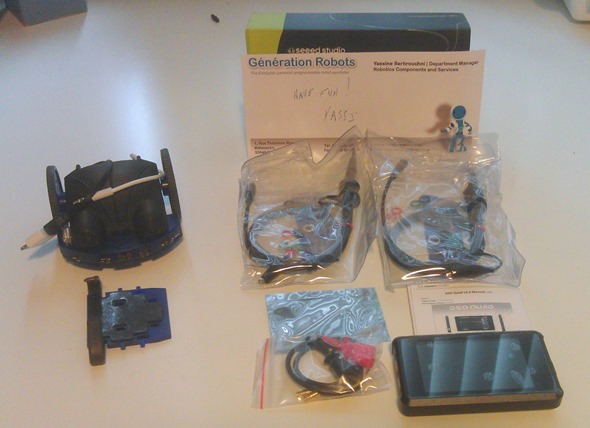
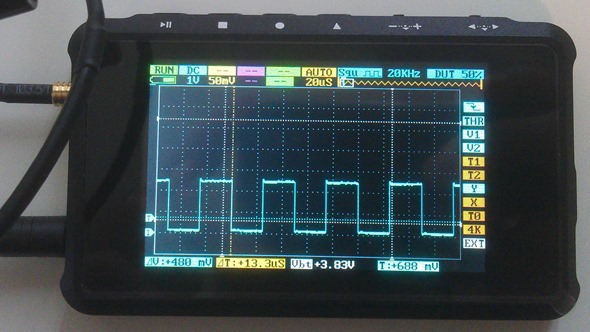

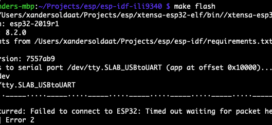
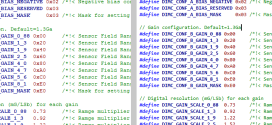
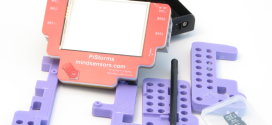
My new Hongshun HAO301 DSO and Logic Analyzer arrived today after 7 long weeks of waiting.
It was a tossup between the Seeedstudio DSO you have, and the HAO301 DSO I finally decided on. The final decision was made with the help of the boys at pridopia.co.uk, who use the HAO301’s for debugging there Raspberry Pi Expansion boards.
The fact that the HAO301 has a 16 Channel Logic Analyzer build-in should be a great plus as well.
It’s going to be great having a DSO around, as I unfortunately I sold the one I had had as at the time it was gathering dust and I needed the cash….
There’s definatly a size and weight difference between the old and new. The HAO301 won’t need wheels.
Please keeps us posted on how you get on with your DSO?
48M bandwidth across 16 channels